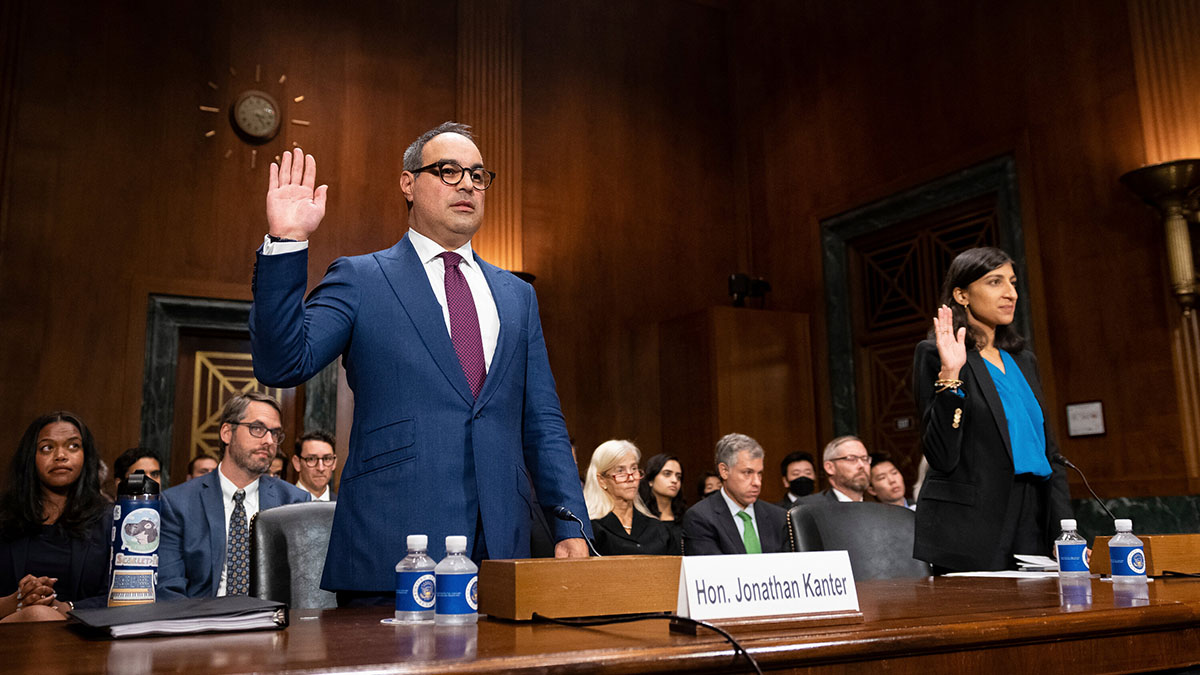Home>Finance>A Primary Reason For Why Mergers And Acquisitions Sometimes Fail


Finance
A Primary Reason For Why Mergers And Acquisitions Sometimes Fail
Published: February 25, 2024
Discover the primary reason for the failure of mergers and acquisitions in the finance industry. Learn how to mitigate risks and ensure successful integration.
(Many of the links in this article redirect to a specific reviewed product. Your purchase of these products through affiliate links helps to generate commission for LiveWell, at no extra cost. Learn more)
Table of Contents
Introduction
Lack of Cultural Integration
Mergers and acquisitions (M&A) are complex corporate maneuvers that can yield tremendous value when executed successfully. However, these strategic initiatives can also falter, resulting in significant financial losses and operational disruptions. Understanding the primary reasons for M&A failures is crucial for businesses aiming to navigate these high-stakes transactions effectively. In this article, we will delve into the key factors that contribute to the failure of mergers and acquisitions, shedding light on the challenges that organizations encounter in this intricate process.
The failure of mergers and acquisitions can be attributed to various factors, including the lack of cultural integration, poor due diligence, overestimation of synergies, ineffective communication, and leadership and management issues. By exploring these critical aspects, we aim to provide insights that can help businesses mitigate the risks associated with M&A activities and enhance their prospects of achieving successful outcomes.
M&A activities are often driven by the pursuit of growth, market expansion, cost efficiencies, and increased competitiveness. However, the realization of these objectives hinges on the ability of the involved entities to navigate the complexities of merging operations, cultures, and resources. As we dissect the primary reasons for M&A failures, it becomes evident that addressing these challenges demands meticulous planning, adept execution, and a deep understanding of the intricacies involved in integrating disparate entities into a cohesive and thriving whole.
In the subsequent sections, we will explore each of these factors in detail, shedding light on their implications and offering valuable insights into how organizations can proactively address these challenges to bolster the success of their M&A endeavors. By gaining a comprehensive understanding of the pitfalls that can undermine M&A initiatives, businesses can fortify their strategic decision-making processes and bolster their capacity to orchestrate seamless and fruitful mergers and acquisitions.
Lack of Cultural Integration
One of the primary reasons for the failure of mergers and acquisitions is the lack of effective cultural integration. When organizations embark on M&A activities, they often underestimate the significance of aligning the cultures, values, and work practices of the entities involved. This oversight can lead to profound challenges that impede the harmonious convergence of the merged or acquired entities, ultimately thwarting the realization of synergies and value creation.
The cultural fabric of an organization encompasses its norms, beliefs, communication styles, and operational frameworks. In the context of M&A, the clash of cultures can give rise to discord, resistance, and disengagement among employees, hindering the collaborative spirit essential for driving the combined entity forward. Moreover, cultural misalignment can erode trust, breed uncertainty, and fuel internal conflicts, undermining the cohesion and productivity of the workforce.
Addressing the lack of cultural integration demands a strategic and empathetic approach. Organizations must proactively assess the cultural landscapes of the entities involved and develop comprehensive integration plans that foster inclusivity, respect diversity, and cultivate a unified organizational culture. By prioritizing open communication, cultural sensitivity, and change management, businesses can bridge the cultural divides and forge a shared identity that empowers employees and propels the integrated entity towards shared goals.
Furthermore, leadership plays a pivotal role in driving cultural integration. Leaders must exemplify the desired cultural attributes, champion inclusivity, and nurture a sense of belonging among employees. By fostering a culture of collaboration, transparency, and mutual respect, leaders can instill confidence, inspire loyalty, and catalyze the alignment of diverse teams towards a common vision.
Ultimately, the lack of cultural integration can unravel the potential benefits of mergers and acquisitions, causing talent attrition, operational inefficiencies, and diminished competitive advantage. By recognizing the significance of cultural alignment and embracing it as a cornerstone of M&A strategy, organizations can fortify their capacity to navigate the complexities of integration and unlock the full value of their strategic initiatives.
Poor Due Diligence
Another critical factor contributing to the failure of mergers and acquisitions is poor due diligence. In the fervor of pursuing strategic expansion or synergistic opportunities, organizations may overlook the meticulous assessment of the target company’s financial, operational, and legal facets. This oversight can lead to unforeseen complications, undisclosed risks, and undetected liabilities, jeopardizing the anticipated benefits of the M&A transaction.
Effective due diligence serves as a cornerstone of informed decision-making in M&A activities. It encompasses a comprehensive evaluation of the target company’s financial statements, market positioning, intellectual property rights, contractual obligations, regulatory compliance, and potential contingencies. Inadequate due diligence can result in post-transaction surprises, such as unanticipated legal disputes, compliance violations, or financial discrepancies, which can erode the value proposition of the M&A deal.
Furthermore, poor due diligence can impede the identification of operational and cultural intricacies that are pivotal for successful integration. Inadequate understanding of the target company’s operational processes, technology infrastructure, and human capital dynamics can impede the development of integration strategies, leading to operational disruptions, talent attrition, and diminished performance.
To mitigate the risks associated with poor due diligence, organizations must prioritize a rigorous and exhaustive assessment of the target company. This entails engaging multidisciplinary teams comprising financial analysts, legal experts, operational specialists, and cultural integration advisors to conduct a thorough examination of all pertinent aspects of the target entity.
Moreover, leveraging advanced data analytics, forensic audits, and scenario-based simulations can enhance the depth and accuracy of due diligence, enabling organizations to uncover hidden risks and opportunities that can profoundly influence the success of the M&A transaction.
By fortifying due diligence processes, organizations can proactively identify and address potential obstacles, negotiate more favorable terms, and develop robust integration plans that account for the nuanced complexities of the target company. Ultimately, robust due diligence serves as a linchpin for informed decision-making, risk mitigation, and value preservation in mergers and acquisitions, underscoring its pivotal role in shaping the trajectory of M&A endeavors.
Overestimation of Synergies
Overestimation of synergies stands as a prevalent pitfall that contributes to the failure of mergers and acquisitions. Organizations embarking on M&A activities often harbor optimistic projections regarding the potential synergistic benefits that the integration of entities can yield. However, these inflated expectations can lead to strategic missteps, financial underperformance, and operational discord, impeding the realization of the anticipated synergies.
Synergies are envisioned as the harmonized strengths, capabilities, and resources that emerge from the integration of two entities, promising enhanced operational efficiencies, cost savings, revenue expansion, and competitive advantages. However, the attainment of synergistic benefits demands a realistic assessment of the compatibility, operational overlaps, and potential challenges that may impede the seamless convergence of the merged or acquired entities.
When organizations overestimate synergies, they may overlook the complexities of integrating disparate operational frameworks, technological infrastructures, and organizational cultures. This oversight can result in unanticipated costs, protracted integration timelines, and operational disruptions that dilute the envisioned synergistic gains.
To mitigate the risks associated with the overestimation of synergies, organizations must adopt a prudent and meticulous approach to evaluating the potential synergistic benefits. This involves conducting comprehensive assessments of operational overlaps, identifying potential areas of synergy, and developing realistic integration plans that account for the intricacies of aligning diverse processes, systems, and human capital.
Furthermore, fostering transparent communication and collaboration between the entities involved is paramount for aligning expectations, mitigating resistance, and fostering a shared commitment to realizing synergistic benefits. By cultivating a culture of openness, inclusivity, and cross-functional engagement, organizations can bridge the gaps between divergent entities and pave the way for the seamless realization of synergies.
Ultimately, by tempering optimism with pragmatic assessments and meticulous planning, organizations can navigate the complexities of integration more effectively, unlock the latent synergistic potential, and bolster the success of their mergers and acquisitions. Embracing a balanced and discerning approach to evaluating and realizing synergies is pivotal for fortifying the strategic foundations of M&A activities and maximizing the long-term value creation stemming from these transformative transactions.
Ineffective Communication
Ineffective communication stands as a pervasive impediment to the success of mergers and acquisitions, exerting profound ramifications on organizational cohesion, employee engagement, and strategic alignment. When entities undergo M&A activities, the dissemination of information, articulation of strategic objectives, and cultivation of a shared vision are pivotal for fostering trust, allaying uncertainties, and galvanizing collective efforts towards integration and value creation.
In the context of M&A, ineffective communication can manifest in various forms, including inadequate transparency, inconsistent messaging, and insufficient stakeholder engagement. These communication deficiencies can breed rumors, fuel anxiety, and sow seeds of discord among employees, impeding their ability to embrace change, adapt to new realities, and contribute meaningfully to the integrated entity.
Moreover, ineffective communication can hinder the alignment of leadership teams, impeding their capacity to orchestrate integration efforts, resolve conflicts, and chart a cohesive path forward. The absence of clear, consistent, and empathetic communication from leadership can erode trust, breed skepticism, and diminish the morale and productivity of the workforce.
To address the challenges posed by ineffective communication, organizations must prioritize transparent, empathetic, and multi-faceted communication strategies that cater to the diverse informational needs of employees, stakeholders, and external partners. This entails fostering open channels for dialogue, articulating the rationale behind M&A decisions, and proactively addressing concerns and uncertainties that may arise during the integration process.
Furthermore, leveraging diverse communication modalities, such as town hall meetings, digital platforms, and interactive forums, can facilitate the dissemination of information, enable real-time feedback, and foster a sense of inclusivity and shared purpose among employees. By embracing a communication approach that values transparency, active listening, and empathy, organizations can mitigate the risks of misinformation, allay anxieties, and cultivate a culture of trust and collaboration.
Ultimately, effective communication serves as a linchpin for navigating the complexities of mergers and acquisitions, nurturing a cohesive organizational culture, and fostering a sense of collective ownership and commitment towards the success of the integrated entity. By recognizing the pivotal role of communication in M&A endeavors and embracing it as a catalyst for alignment and engagement, organizations can fortify their capacity to realize the envisioned synergies and value creation stemming from these transformative transactions.
Leadership and Management Issues
Leadership and management issues represent a significant contributing factor to the failure of mergers and acquisitions. In the context of M&A activities, the efficacy of leadership and management profoundly influences the success of integration, cultural alignment, and strategic realization of synergies. When organizations grapple with leadership and management challenges during M&A, it can precipitate discord, talent attrition, and operational inefficiencies, undermining the intended benefits of the transaction.
Leadership and management issues can manifest in various forms, including the lack of a cohesive integration strategy, ambiguous decision-making frameworks, and inadequate change management capabilities. The absence of decisive and empathetic leadership can breed uncertainty, resistance, and disengagement among employees, impeding their ability to adapt to the evolving organizational landscape and contribute effectively to the integrated entity.
Moreover, conflicting leadership styles, power struggles, and cultural disparities within the leadership and management ranks can impede the development of a unified vision and strategic direction for the integrated entity. This lack of alignment can cascade down the organizational hierarchy, sowing seeds of confusion, diminishing morale, and hindering the collaborative spirit essential for successful integration.
To address leadership and management issues in the context of M&A, organizations must prioritize the development of a cohesive and empathetic leadership framework that embodies the values of transparency, inclusivity, and strategic clarity. This necessitates fostering open dialogue, nurturing a culture of collaboration, and empowering leaders to exemplify the desired cultural attributes and strategic imperatives.
Furthermore, investing in leadership development, change management capabilities, and conflict resolution skills is pivotal for equipping leaders and managers with the competencies required to navigate the complexities of integration, foster cultural alignment, and inspire confidence and commitment among employees.
By embracing a leadership and management approach that values transparency, collaboration, and strategic alignment, organizations can fortify their capacity to steer the integrated entity towards shared goals, mitigate resistance, and leverage the collective strengths of diverse teams to realize the potential synergies and value creation stemming from the M&A transaction.
Ultimately, effective leadership and management serve as linchpins for orchestrating successful mergers and acquisitions, nurturing a cohesive organizational culture, and fostering a sense of collective ownership and commitment towards the success of the integrated entity. By recognizing the pivotal role of leadership and management in M&A endeavors and embracing it as a catalyst for alignment and engagement, organizations can fortify their strategic foundations and maximize the long-term value creation stemming from these transformative transactions.
Conclusion
Mergers and acquisitions (M&A) represent transformative endeavors that hold the promise of unlocking synergies, driving growth, and bolstering competitive advantage. However, the complexities inherent in M&A activities can give rise to formidable challenges that, if left unaddressed, can impede the realization of intended benefits and lead to suboptimal outcomes. As we have explored in this article, the primary reasons for the failure of mergers and acquisitions encompass the lack of cultural integration, poor due diligence, overestimation of synergies, ineffective communication, and leadership and management issues.
Addressing these challenges demands a holistic and proactive approach that encompasses meticulous planning, empathetic leadership, and a deep understanding of the intricacies involved in integrating disparate entities into a cohesive and thriving whole. By prioritizing transparent communication, cultural sensitivity, and rigorous due diligence, organizations can fortify their capacity to navigate the complexities of integration and unlock the full value of their strategic initiatives.
Furthermore, fostering a culture of collaboration, transparency, and strategic alignment is pivotal for mitigating resistance, nurturing a cohesive organizational culture, and propelling the integrated entity towards shared goals. By embracing a balanced and discerning approach to evaluating and realizing synergies, organizations can fortify their strategic foundations and maximize the long-term value creation stemming from these transformative transactions.
As organizations venture into the realm of mergers and acquisitions, it is imperative to recognize the multifaceted nature of these endeavors and the critical role of comprehensive planning, effective leadership, and empathetic communication in shaping their outcomes. By gaining a comprehensive understanding of the pitfalls that can undermine M&A initiatives, businesses can fortify their strategic decision-making processes and bolster their capacity to orchestrate seamless and fruitful mergers and acquisitions.
Ultimately, by recognizing the pivotal role of cultural integration, due diligence, synergistic assessments, communication, and leadership in shaping the trajectory of M&A endeavors, organizations can fortify their capacity to navigate the complexities of integration, unlock the latent synergistic potential, and bolster the success of their mergers and acquisitions. By embracing these insights and integrating them into their strategic approach, organizations can fortify their capacity to realize the envisioned synergies and value creation stemming from these transformative transactions.














